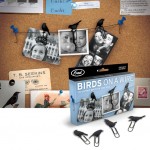By Shannon, Ladybug’s mom
My daughter, the animal lover (yes, I’ve mentioned her fascination with the animal kingdom in every Ladybug post, I think), loves to hear the story about a baby robin her father and I rescued back when I was pregnant with her.
We were living in Rogers at the time and snatched the mostly un-feathered baby bird from sudden death via the jaws of a large, menacing, black cat. Actually, we dramatically shooed the cat away and came up with a plan: make an impromptu nest, nail the nest to the backyard fence and then get some gloves to pick up the baby and deposit her in said nest.
We hoped that the parents would still feed the baby. Sure enough, after a while, we saw them twittering and fussing in the back yard. Then they began airlifting worms to the little one’s open mouth. Every freaking second, or so it seemed. It was poetic. I, too, would soon be feeding my very own baby and I didn’t doubt that he or she would want to be fed quite regularly. At least I didn’t have to drop live worms down my baby’s gullet.
A few weeks ago, however, I was able to experience that sensation. No, I didn’t deliver the worm via my open mouth, but I did drop some squiggly, wiggly worms with my fingers down the throat of a new baby robin, circa 2008.
The baby had fallen out of his nest too early and for some reason the parents weren’t feeding it. It was in the yard of my neighbor, Carolyn, and we brainstormed about what to do about it. We finally put it in a shoe box filled with grass and placed it out of the reach of would-be bird feasters. She found a few worms and grimaced while feeding them to the hungry baby. She fed it throughout the next day. She called the local animal hospital, but they told her they don’t take wild animals anymore.
When they headed off to a ball game, we switched mothers.
It was my turn to get an unwilling worm into a hungry robin’s mouth. He seemed unable to reach up for the worm. He wanted it dropped directly into his mouth. It’s harder than you think to get a worm to drop into a baby bird’s mouth. The worms are sticky, for one, and they wiggle vigorously when near beaks of death. I felt a little sorry for the worm, but sorrier for the hungry robin, so I kept at it.
After a while, it occurred to us to that we could call New Hope Animal Hospital in Rogers. They had taken our baby robin back in 2001 and Lynn Sciumbato, who rehabilitates birds, had helped the little one out. The reason the original robin had needed rehabilitation?
Well, here’s the rest of the story my daughter likes to hear: After we built her the faux nest, the baby robin’s parents took good care of her. Then one day the baby hopped out of her nest and walked around, testing her wings. My husband and I would rush home from work to admire the baby’s progress. On a Saturday, we watched with pride as the she flew for longer stretches at a time. Then, suddenly, she flapped wildly and went over the roof. We ran through the house, hoping to catch a glimpse of her as she flew off into the sunset. But when we ran out the front door, we found her in the jaws of the original black cat that had been waiting patiently for its bird dinner.
My husband ran over to the cat and in his most guttural, commanding voice, shouted: “Drop it!” And that cat did. The baby bird hopped around for a while, favoring her wing. We knew she wouldn’t make it, not with that cat prowling about and possibly not with a wounded wing, so we called around for help. I’d heard about the bird lady and we finally reached someone who knew how to get in touch with her. So we took the baby to New Hope Animal Hospital and we eventually got a good report: the baby’s wing had healed nicely and she had flown off into the sunset after all.
I’m sure the most recent robin will be in good hands. They even said Lynn likes to release the birds from whence they came. So we might see this one again real soon.





